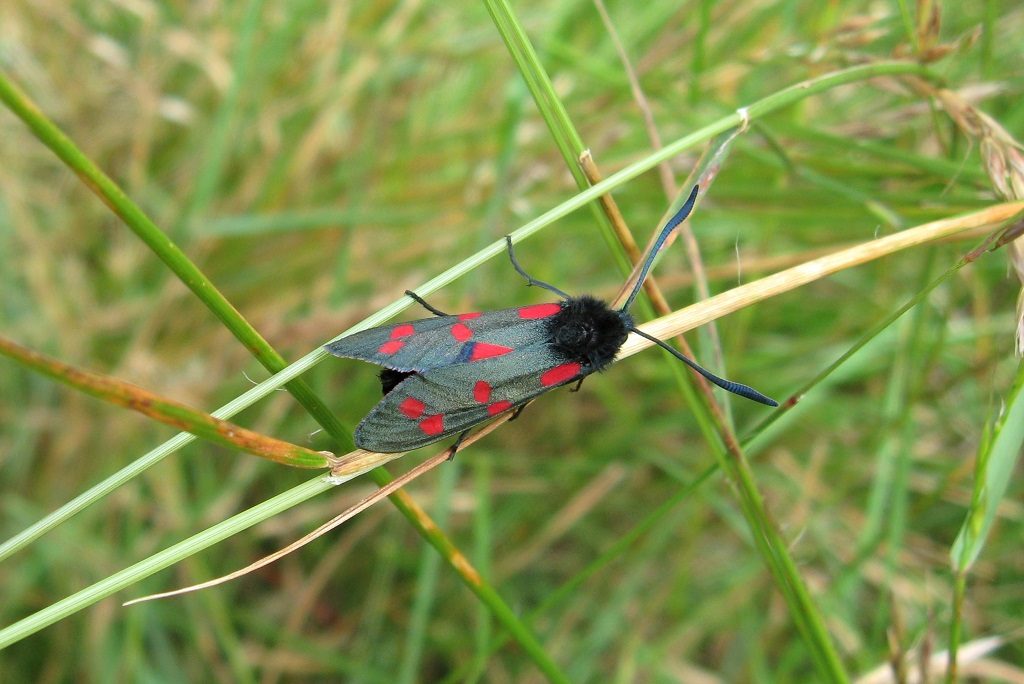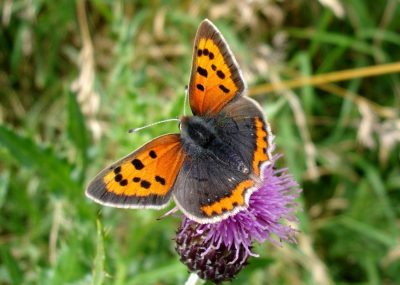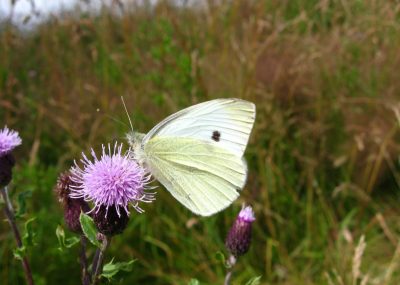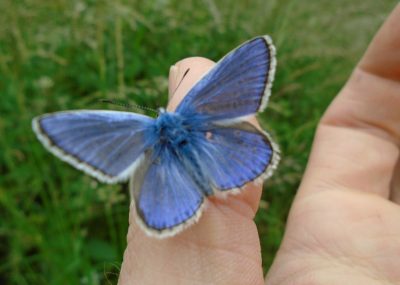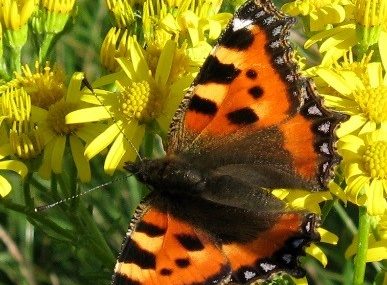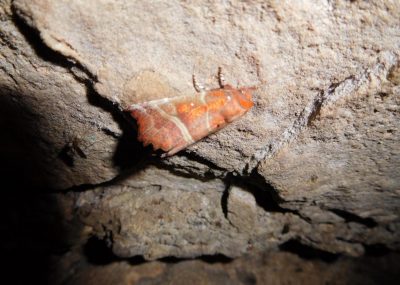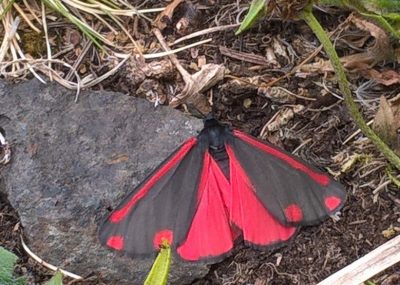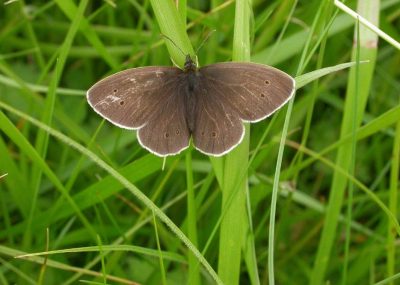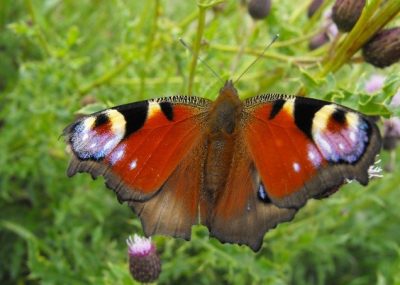As we’re celebrating Butterflies Day, this would seem a good time to take a brief look at a group of flying insects that comprises of over 250,000 different species! These insects are all part of the same biological order, that of Lepidoptera … they are butterflies and moths.
Is it a butterfly or a moth?
It is not surprising that there is some confusion on answering this question. After all, both butterflies and moths belong to the same biological family, Lepidoptera, meaning scale winged – the name comes from the powdery scales that come off when you touch their wings.
When it comes to defining the difference between a butterfly and a moth, I regularly have to debunk myths that come up again and again:
“Butterflies fly during the day, moths at night.”
Butterflies are active during the day (diurnal). While many species of moths are nocturnal, in that they fly and feed at night, there are still a large number active during the day – helpfully these are called day-flying moths!
“There are more butterflies than moths.”
In the UK there are 59 species of butterfly, while there are 2,500 species of moth!
“Butterflies are brightly coloured, moths are dull coloured.”
Butterflies are often brightly coloured but there are plenty of brightly coloured moths … and brown coloured butterflies! Look at the photographs below of the brightly coloured day-flying 6-Spot Burnet moth and the brown-coloured Meadow Brown butterfly.

The 6-Spot Burnet moth and the Meadow Brown Butterfly. © Holyrood Park Ranger Service
“Moths are tiny flitting insects that circle light bulbs.”
The Atlas moth (Attacus atlas) has a wingspan of about a foot (30.5 cm), which is about the same size as that of the largest butterfly, the Queen Alexandra’s Birdwing (Ornithoptera alexandrae).
“Butterflies have little ‘club-shaped’ ends to their antennae, while moths’ antennae are ‘feathery’ at the ends.”
Butterflies’ antennae are often wider at the tips, to the point that they do look like little clubs. Moths’ antennae are often feathery, although sometimes they are thin – like a butterfly – but usually lacking the club-like tips. This difference can be seen in the photographs below showing the wider, more ‘feathery’ antennae of the Narrow-bordered 5-Spot Burnet moth, in comparison with the ‘club-shaped’ ends of the Holly Blue butterfly’s antennae.
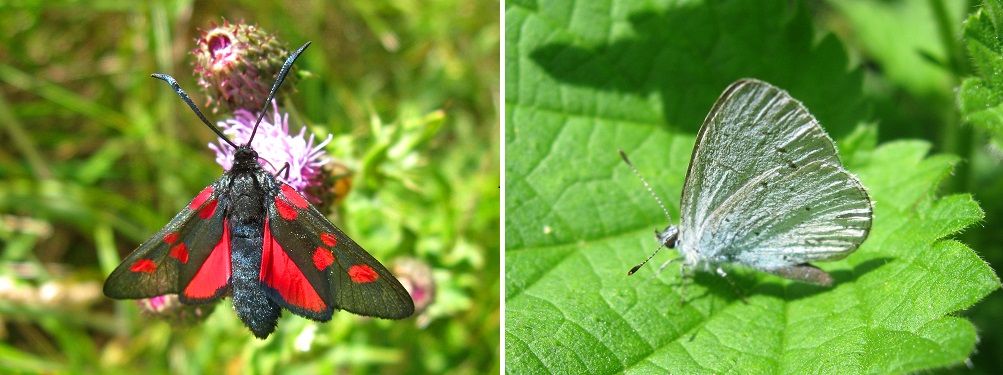
Narrow Bordered 5-Spot Burnet moth and Holly Blue butterfly. © Holyrood Park Ranger Service
Two other ways to help in distinguishing between butterflies and moths:
- They tend to hold their wings differently when at rest – butterflies usually have their wings folded, while moths will often have them spread out. (Although butterflies will have them spread out if they are warming themselves in the sun, as in the earlier photograph of the Meadow Brown butterfly – sorry!)
- Often moths’ bodies are plumper and fuzzier.
Unfortunately, or fortunately depending on how simple you like things, there are no single defining characteristic that can be used to identify whether a particular flying insect is a butterfly or a moth. There are rules of thumb to help tell them apart but, as is so often the case in life, there are numerous exceptions to those rules!
However, knowing some of these differences does make it easier to decide if the insect is a butterfly or a moth. For example, the insect that helps Gandalf in Lord of the Rings shows up at night, has a wide fuzzy body, is dull-coloured and feathery antennae – so is a moth rather than a butterfly!
Happy #butterflyday! ?Ranger Keith has a look at butterflies & moths in our blog: https://t.co/JgAlbfQXBG Which do you prefer? (Read first!)
— Historic Scotland (@welovehistory) March 14, 2017
Why are these insects important?
Well, besides looking brilliant and having as much right to exist as any other organism on the planet …
As a group of flying insects, they have been around for at least 50 million years, a lot longer than we have managed as Homo sapiens! And as we have already heard, there are over 250,000 different species – so about 25% of all species of insects on the planet!
Beyond these aesthetic and intrinsic values, they are also hugely important in showing how the environment and habitats in which they live are changing. Their short life cycles, the limited distances that populations travel, their specialised diets and close reliance on weather and climate make many species sensitive to very small changes. These factors, along with the relative ease in which they can be identified (although it doesn’t feel that way when starting out!); the long history and popularity of butterfly and moth studying; and that they are present in all major habitat types in the UK (except dead wood), makes them the ideal organisms to help inform us on environmental and climatic changes and trends.
Also, we come back to that ever-present factor in nature … they are an important link in the food chains that join all the Earth’s plants, animals and fungi. For example, in Britain and Ireland, Blue Tits alone eat about 50 million moth caterpillars every year!
A small selection of the butterflies and moths on our sites
Here are some of the stunning butterflies and moths that hibernate on our sites over winter, and are present over the spring, summer and – depending on the species – autumn months:
Also, it is not only the adults that are eye-catching, the caterpillars can more than hold their own in the visual stakes! Large collections of Peacock butterfly and Cinnabar moth caterpillars certainly grab your attention.
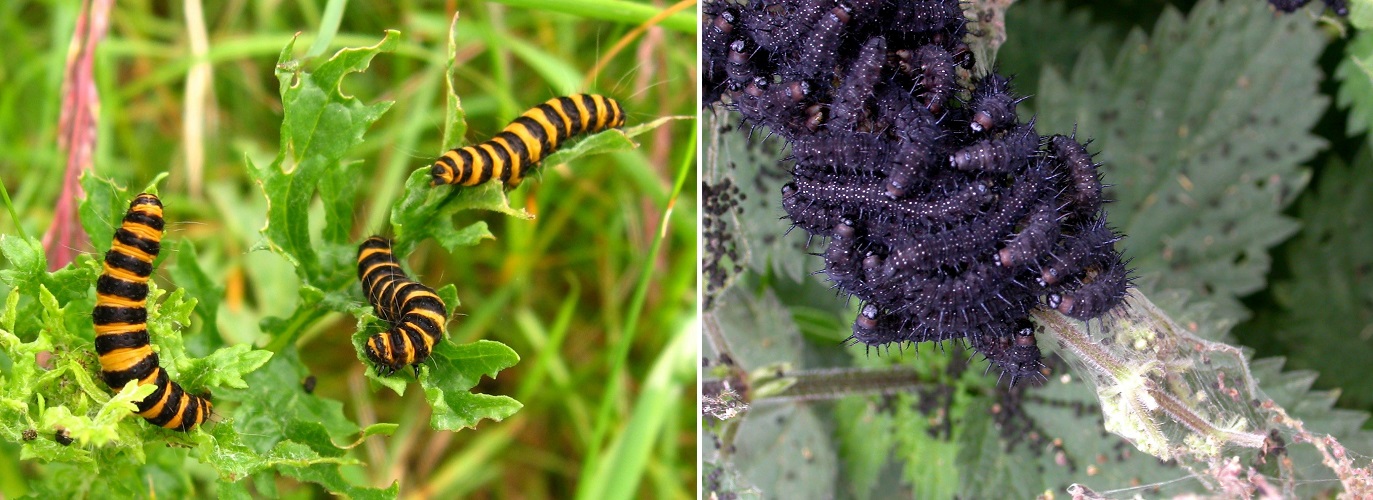
Cinnabar (left) and Peacock moth caterpillars. © Holyrood Park Ranger Service
There are a couple of less common species to keep a look out for in Holyrood Park: the Wood Sage Plume moth and the Northern Brown Argus butterfly.
The Plume Moth
The Wood Sage Plume moth is unusual that its wings are divided into a number of parts that resemble feathers or plumes. The adult only lays its eggs on the larval food plant, Wood Sage. The caterpillar feeds from early September until it gets too cold and then it hibernates under one of the leaves. Once spring comes around they burrow into the Wood Sage stem and feed on the sap. This causes the tip of the Wood Sage to turn brown and whither – so alerting us to the fact that we have Plume Moths present! It is classed as Nationally Scarce but within Edinburgh it can be found in Holyrood Park and on Blackford Hill.

The Plume Moth as an adult and as caterpillar. © Holyrood Park Ranger Service
The Northern Brown Argus
The Northern Brown Argus butterfly disappeared from Holyrood Park in 1869 but thankfully reappeared naturally in 2005. The Northern Brown Argus is quite similar to the female Common Blue butterfly, but can be differentiated by the white spot in the middle of each forewing. The species has shown a 91% decline in numbers over a 25-year period, so this is certainly one to keep an eye out for.
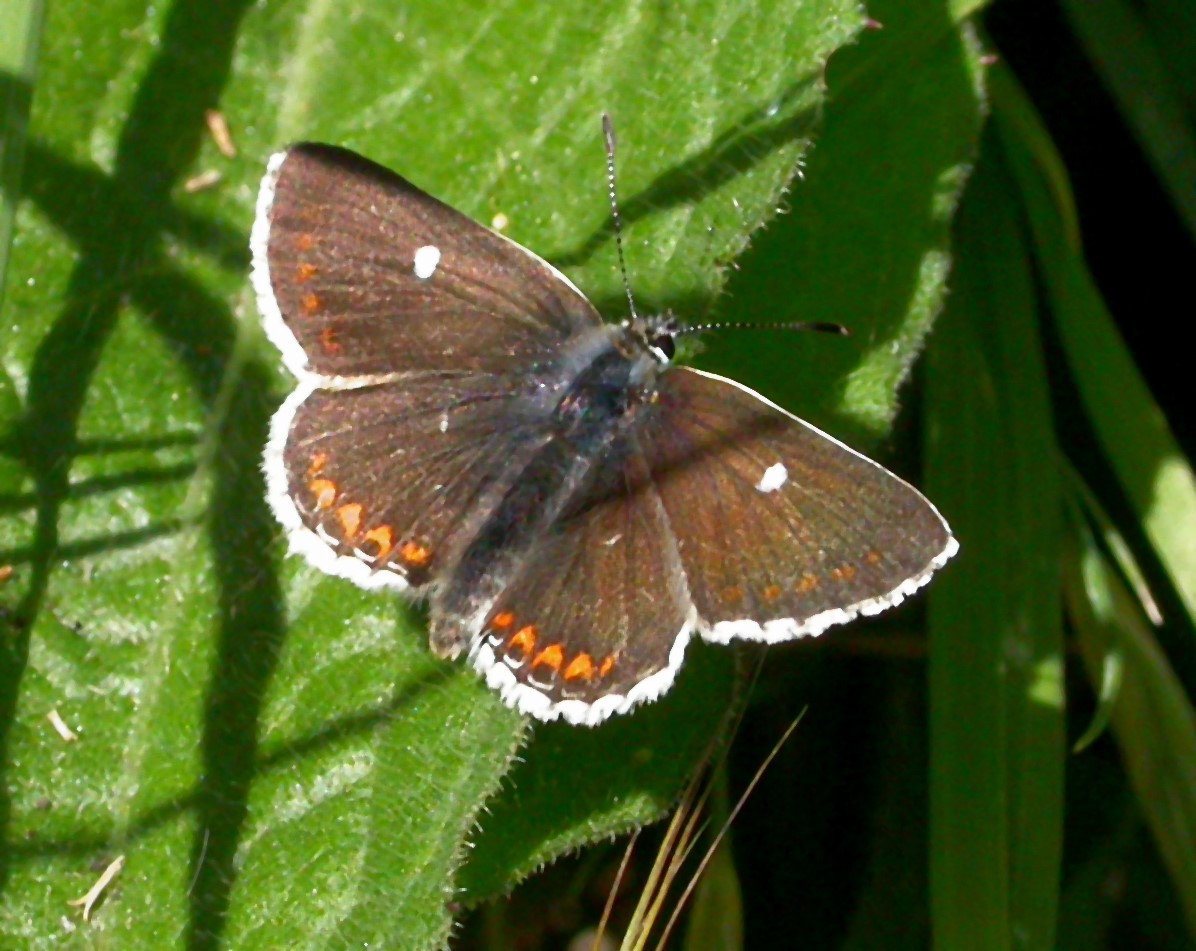
Northern Brown Argus. © Holyrood Park Ranger Service
How can you enjoy and, at the same time, help butterflies and moths?
The easiest way is to get out to places where these wonderful flying insects fly during the day, and night. This can be in the countryside, parks and green spaces in the city and Historic Environment Scotland sites (of course!).
There are free mobile phone apps that help you identify the butterflies you see when out and about. The iRecord Butterflies app also provides an easy way to contribute to Butterfly Conservation’s national recording scheme. The iSpot app allows you to upload photos from your mobile to an online community that will only be too happy to help you with the identification of your butterfly, moth, or almost any kind of wildlife.
Gardening with butterflies, moths – and other insect pollinators – in mind is very rewarding and an easy thing to do. Butterflies will visit any garden if there are flowering plants there from which they can feed on the nectar. The same goes for many species of moths, which also need plants on which to lay their eggs. Any planted up small space can help, including adding a container to a balcony or some flowering plants to a window box. There are lots of online tips on what to plant to attract butterflies and moths. Here are a couple of pages to get you started:
If you fancy getting more involved then contact a local wildlife trust or an organisation such as Butterfly Conservation, for the opportunity to get hands-on experience volunteering on nature reserves, helping out with events, or getting involved in monitoring programmes.
As a Ranger Service, Historic Environment Scotland carry out butterfly surveys every week from April through to September, which feed into the nation-wide United Kingdom Butterfly Monitoring Scheme (UKBMS). It is always great to get new people involved in any of the surveying that we carry out, so if you fancy getting involved then please drop the Ranger Service a line.
Whatever you choose, enjoy the simple pleasure spotting this beautiful and hugely varied group of flying insects, during what is hopefully a summer of warm, dry and balmy days and evenings!

